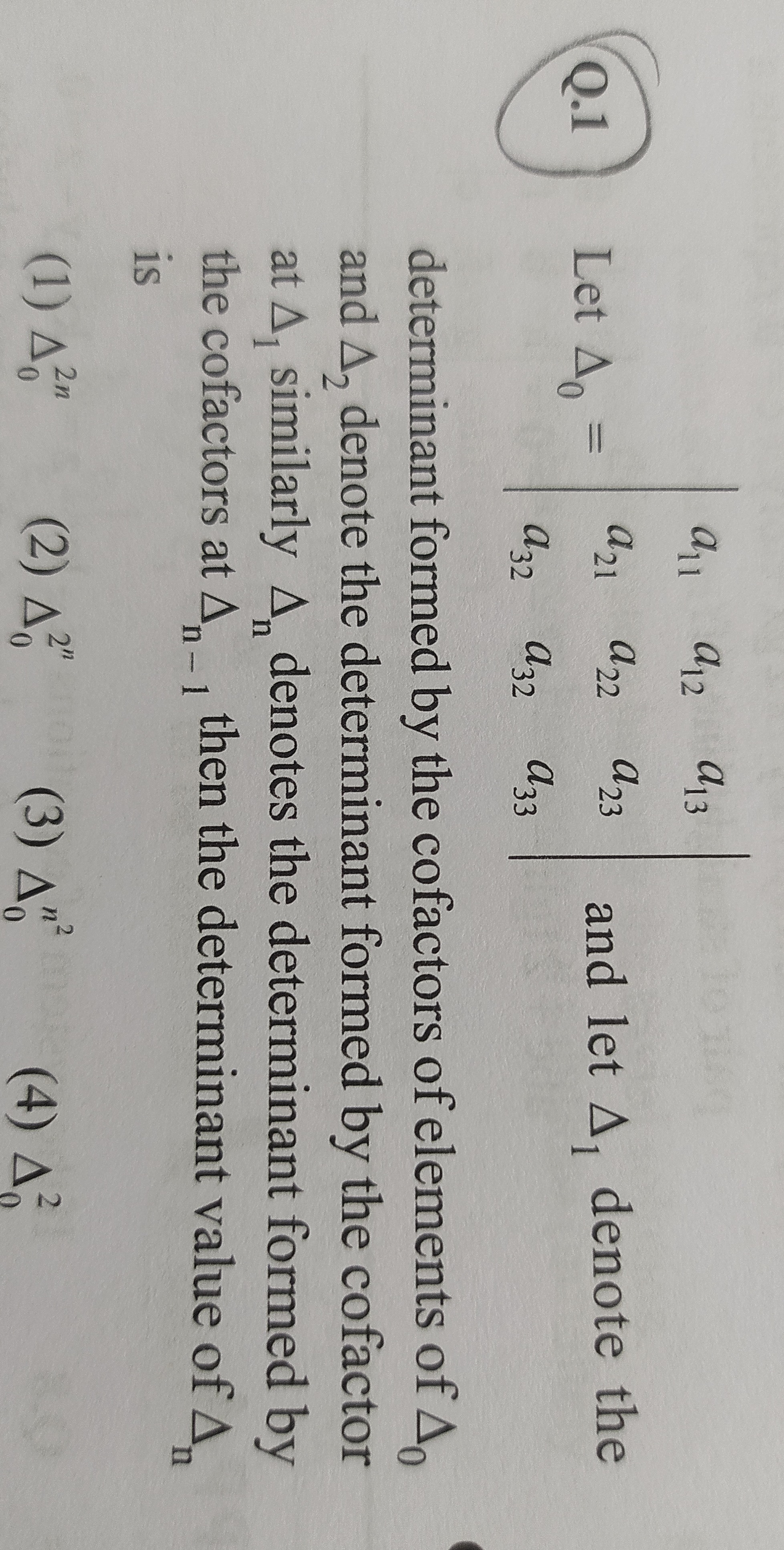Question
Question: Let $\Delta_0$ = $\begin{vmatrix} a_{11} & a_{12} & a_{13} \\ a_{21} & a_{22} & a_{23} \\ a_{32} & a...
Let Δ0 = a11a21a32a12a22a32a13a23a33 and let Δ1 denote the determinant formed by the cofactors of elements of Δ0 and Δ2 denote the determinant formed by the cofactor at Δ1 similarly Δn denotes the determinant formed by the cofactors at Δn−1 then the determinant value of Δn is

A
Δ02n
B
Δ02n
C
Δ0n2
D
Δ02
Answer
Δ02n
Explanation
Solution
For a 3×3 matrix A with determinant Δ0, the cofactor matrix is the adjugate adj(A). A known result is:
det(adj(A))=(detA)3−1=(Δ0)2.Thus, if we denote by Δ1 the determinant of the matrix of cofactors of A, then:
Δ1=(Δ0)2.Now, the process is repeated. For an invertible 3×3 matrix B, the determinant of its cofactor matrix is also (detB)2. Therefore:
Δ2=(Δ1)2=[(Δ0)2]2=(Δ0)4.Continuing in this manner, we see that:
Δn=(Δn−1)2=(Δ0)2n.Therefore, the correct answer is Δ02n.
